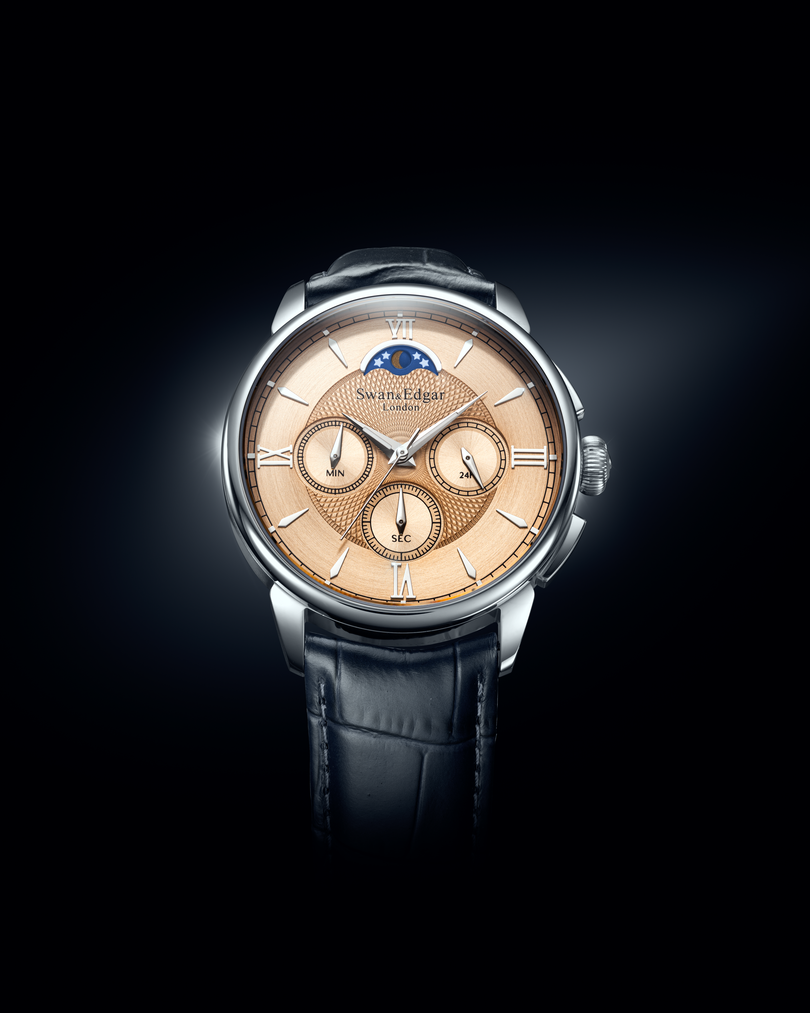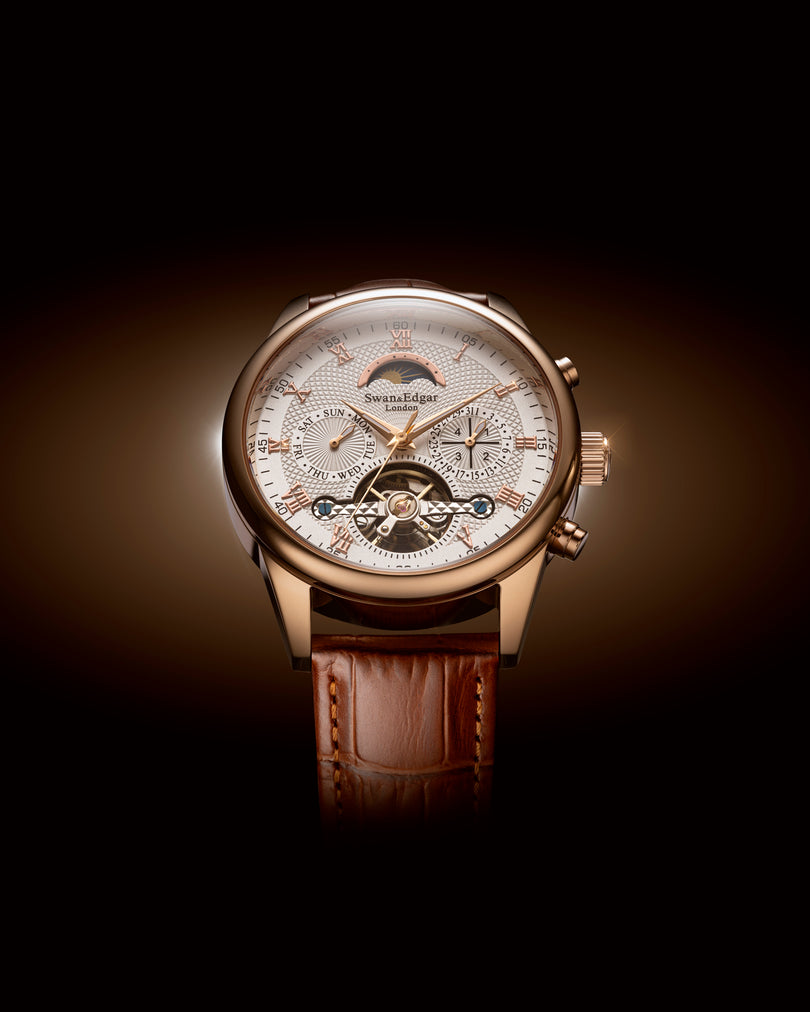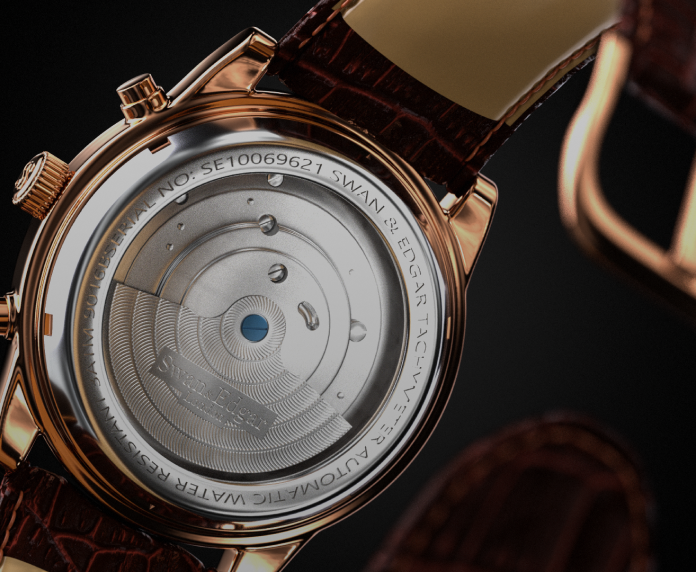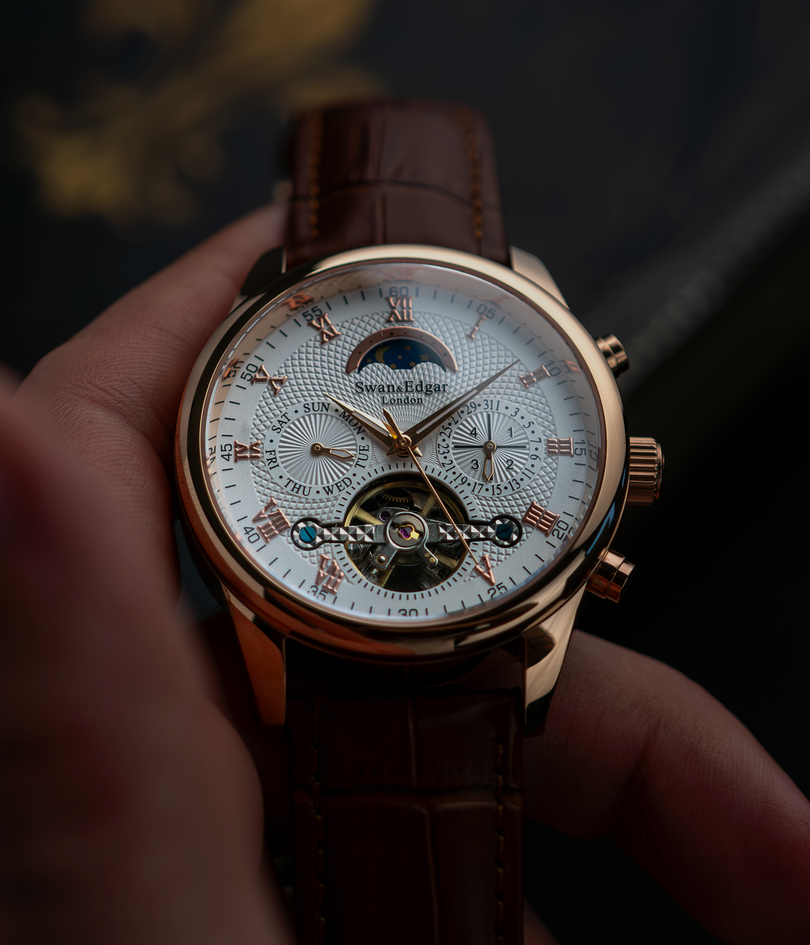An automatic watch offers many distinctions compared to traditional mechanical watches. Whilst a mechanical watch relies on manual winding to maintain precision and movement, automatic watches use energy generated by the wearer’s movement and keeps the watch operational even when you take it off at night.
If you have recently purchased or been gifted an automatic watch, or you are passionate about proper automatic timepiece care, it’s important to know how to look after an automatic watch. In this comprehensive guide, we will explain everything you need to know to keep your automatic watch working correctly.
Service Your Automatic Watch Regularly
Regular watch servicing will help you look after your timepiece and ensure it lasts as long as possible by extending the lifespan thanks to knowledgeable input from a specialist. This servicing can involve checking over the watch to ensure all parts and components are still fully operational and repairing or replacing any parts that are not working as well as they used to.
Watchmakers recommend getting your watch serviced every three to five years, although this can vary depending on how often you use and wear the watch. If you purchased a Swan & Edgar watch, register your warranty as soon as possible.
Do Not Drop Or Bump It
As automatic watches are constructed using hundreds of delicate individual parts, you must take care not to drop or bump the watch at any point. This is easier said than done, but it is not impossible as long as you are careful whenever wearing it.
Dropping or bumping the watch could cause these fragile parts to become dislodged, which affect the watch’s accuracy and performance. While you understandably want to show off your timepiece at all times, try not to wear it during intense activity or in tight and busy areas, as there is a risk the watch could collide with hard and potentially damaging surfaces.
Keep Your Watch Away From Moisture
Similarly, you must also keep your watch away from moisture, especially for an extended period. Even timepieces that boast water resistance should be worn with caution, so try to avoid swimming, bathing, or spend too long in the rain while wearing the watch.
Not only can water affect the delicate mechanisms, but the water can also cause the steel bracelet to rust, which affects the watch’s appearance. As automatic watches are considered luxury items, you should do everything you can to protect them from water exposure.
Do Not Operate the Crown Or Pushers In Water
You can damage the watch even more if you operate the crown or pushers in water. When you operate these features, you expose the interior parts to moisture and can waterlog your automatic watch beyond repair. This is true even if your watch is waterproof, as releasing the crown allows water to get into the case.
Avoid Powerful Magnets
Much like water, magnets and electronics should not mix. The major risk here is that your watch loses accuracy if it becomes magnetised, so any powerful magnets should be considered with caution. It’s unlikely you will encounter any severely powerful magnets in your everyday life, and the likes of fridge magnets should not cause any problems.
However, if you work in any industrial settings, there could be a strong magnet somewhere in the area. To prevent disappointment or damage to your timepiece, we recommend removing it.
Do Not Wind The Watch While Wearing It
Winding the crown stem while wearing it increases the risk of breaking the mechanism. This happens because you may put too much pressure on the stem if the watch is still attached to your wrist. Therefore, if you ever need to wind your watch manually, remove the timepiece beforehand. Doing so prevents damage and also enhances your accuracy when winding to ensure better efficiency.
But Try to Minimise Manual Winding
Ideally, you should never need to wind your watch manually. Despite this, it is a useful option if you want to power up your timepiece quickly if you know you won’t be moving much over the next few hours, such as sitting on a plane or taking a road trip. Due to the automatic winding capability, manual winding can cause premature wear and tear, so even if you need to wind your timepiece, keep it to a minimum. Anywhere between just five and ten revolutions will suffice.
Wear and Use It Regularly
As automatic watches generate their power through the wearer’s movement, you need to be active enough to maintain its power reserve. If you don’t wear or use your watch enough, this power reserve will deplete to empty, causing your watch to lose power and fail to operate
This does not mean your watch is broken forever. It simply means that you need to allow time to recharge the power reserve, which you can do with minimal manual winding or just wearing their watch. If you are only concerned about wearing the watch as a fashion accessory (at least for now) this should not be an issue.
Be Careful If Changing the Strap
Like most watches, automatic timepieces have the option to change the strap. If you have the tools, you may want to do this yourself, but it is not something we recommend if you are not experienced in changing watch straps.
As changing the strap requires intricate tools, you risk scratching the case and damaging the watch. Instead, speak to a professional and ask them to shoes you how to change the strap safely to maintain its appearance.
Stay Away From Extreme Temperatures
Automatic watches have not been designed to handle extreme temperature on both sides of the spectrum. Wearing your watch in these environments can cause the internal components to expand or contract which can cause functionality issues, affecting precision while also risking condensation and oil-based problems.
Have the Time?
Automatic watches provide many benefits compared to mechanical counterparts. If you want to get the most out of your automatic timepiece, make sure you follow this advice. At Swan & Edgar, we offer a five year warranty service on all of our timepieces to ease your mind. However, follow the above to keep your watch looking and running just as you brought it.
Why not take a look at some of our automatic watches?









